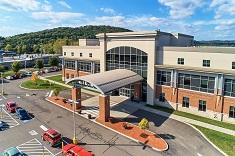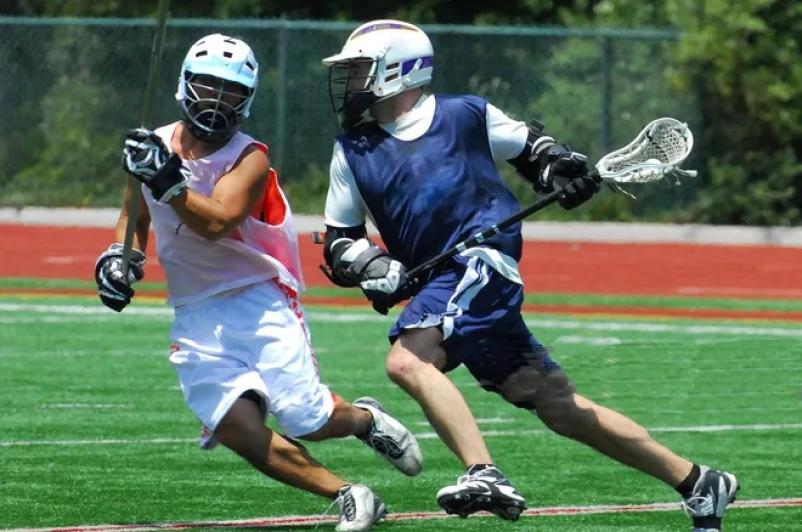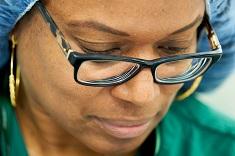

Game-changing technology: BEAR® Implant is reshaping ACL treatment
October 21, 2024
In the world of medical advancements, the BEAR® Implant promises to change the way anterior cruciate ligament (ACL) tears are treated. Recently approved by the U.S. Food and Drug Administration (FDA), this groundbreaking technology marks a shift in the treatment of ACL tears. UHS is proud to be one of the only providers offering the BEAR® Implant procedure in the greater Southern Tier region of New York and Northeast Pennsylvania.
ACL injuries are common, with around 400,000 occurring in the U.S. each year due to sports like soccer, basketball, tennis and football. Traditional ACL reconstruction surgery is effective but has drawbacks. The BEAR® Implant, however, now offers patients a new treatment option.
Kristen Herbst, DO, Orthopedic Surgery and Sports Medicine, has been performing the new procedure on UHS patients, explaining its benefits and who is a good fit for the BEAR® Implant.
“A range of patients tear their ACL: young athletes, people who play recreational sports on weekends. It is for anyone with an acute ACL tear,” Dr. Herbst says. “In the beginning, recovery is a little slower, and the patient must comply. But long-term, we've been able to get all these patients back to all their respective sports, so it's not limited to any specific sport or age group.”
A new era in ACL treatment
For more than 30 years, ACL tear treatments remained essentially unchanged, relying heavily on reconstruction techniques. Traditional ACL reconstruction requires harvesting a healthy tendon from another part of the patient's leg or using a tendon from a deceased donor.
“In the past, the only way we've been able to address ACL tears is to do a reconstruction: Meaning take out the torn ligaments, take a piece of tendon from somewhere else in the patient's body,” Dr. Herbst says. “That was the gold standard.”
While effective, this approach comes with its own challenges and complications, including the necessity of a second surgical wound site.
Enter the BEAR® Implant — a device designed to bridge the torn ends of the ACL using a minimally invasive procedure. This implant does not require an additional surgical site. Instead, it leverages the body’s natural healing abilities to repair the torn ACL, making the recovery process smoother for patients.
“With the BEAR® Implant, an environment is provided to allow the patient’s native ACL to heal. This allows the patient to preserve their anatomy and not undergo reconstruction,” Dr. Herbst adds.
How does the BEAR Implant work?
The BEAR® Implant functions as a scaffold that facilitates healing of the torn ACL. The procedure begins with the surgeon injecting a small amount of the patient’s blood into the implant. This blood-infused implant is then placed between the torn ends of the ACL. Combining the BEAR Implant and the patient’s blood initiates healing, allowing the ACL to recover while maintaining its original attachments to the femur and tibia. Dr. Herbst explains that by keeping these original attachments, this process lowers the risk of reinjury in the future.
Remarkably, the body resorbs the BEAR® implant within approximately eight weeks as the ACL heals. This natural resorption means no foreign material remains in the knee after the healing process.
Another benefit, Dr. Herbst says, is that it's more bone-preserving. “Instead of drawing large sockets into the bone with the reconstruction operation, we just drill tiny pinholes to suspend the sutures connecting the ACL and the BEAR® Implant.”
What happens if a patient re-tears their ACL in the future? “Their second surgery is a lot easier because now they can have a reconstruction the second time around, instead of having a revision reconstruction, which can sometimes be challenging because of bone loss and hardware previously inserted.”
Proven success and patient satisfaction
Clinical studies have shown that the BEAR® Implant not only restores the quality and size of a torn ACL to that of an uninjured ACL but also leads to faster recovery of muscle strength. However, patients should know that a BEAR® Implant procedure requires rehab to heal fully.
“The patient has to comply with the postoperative course and restrictions. We're asking the body to heal this ACL instead of relying on a graft, so it is a more conservative protocol. So, they have to be able to comply with following the restrictions of not putting all their weight on their leg initially, going forward with their range of motion, and more.”
Dr. Herbst says that she still requires her patients to undergo a rigorous return-to-play protocol, and that can take a similar amount of healing time as those who underwent traditional autograft ACL reconstruction, but the patience pays off.
“We have a lot of patients who have returned to college sports and are very happy with their outcome.”
For more information and to see if you're a good fit for the BEAR® Implant, visit BEAR® Implant for ACL Restoration | United Health Services (nyuhs.org)

